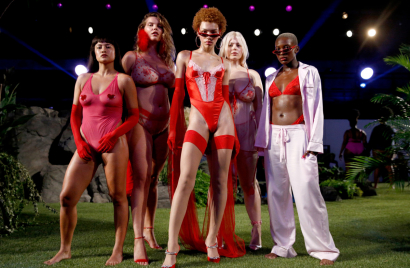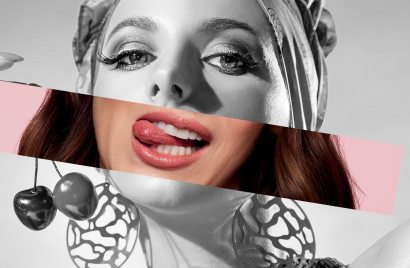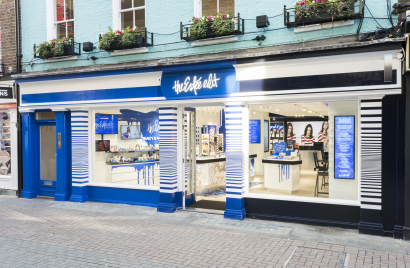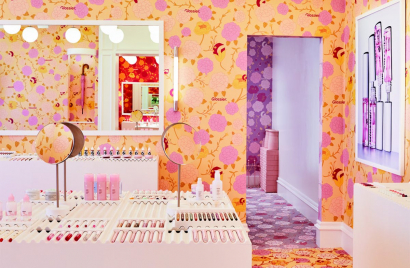
Dreamies investigation proves that the treats are irresistible to cats
The campaign by Adam&EveDDB concludes that the only cats who don’t love the pet treat are human Cats

Beauty is the midst of a physical and virtual revolution with significant implications for brands.

The opening of a new decade always elicits a wealth of articles both looking back and looking forwards. Noticeably, the last decade has seen a marked shift in the world of beauty, both in terms of what we view as an ideal and in turn, how brands are responding to that shifting attitude. Whether that’s embracing gender neutral collections, producing foundations for all skin tones or simply a reduction in the use of the term ‘anti-ageing’.
The focus on beauty over the last few years has moved from artfully contouring a face that mimics one photoshopped in a magazine to embracing the innate beauty of flaws and what have been historically viewed as ‘imperfections’. From freckles to smile lines, moles and facial hair, the beauty boundaries have significantly shifted over the last decade. There has also been a decline in the purchase of make-up, with research from Mintel attributing this shift to the growing trend for naturally radiant skin fuelled by the growth of brightening and illuminating products in the thriving UK women’s facial skincare category. The global skincare market as a whole is set to be worth $135 billion by 2021, according to forecasting by Lucintel.
These changing consumer consumption habits and the rejection of outdated beauty ideals has inspired brands to offer products and marketing messages that do more than sell hope in a jar to a flawless, mythical demographic. Instead the next generation of beauty brands are marketing to a mindset that transcends age, ability or race. Brands, many of which were born and continue to grow online, are conjuring up worlds that consumers want to be part of, offering them a #unfiltered view of the sort of tribe they can be part of.
While these worlds have existed solely in digital form up to this point, many brands are now realising the powerful impact that physical retail spaces can have on their business. These stores give customers a chance to experience the world they’ve only been browsing through their smart phone in real life; to test out the products’ look and feel, get advice from the brand’s ambassadors and, hopefully, become brand advocates in their own right.


Ph. Savage x Fenty's Fall 2018 collection // Beauty Pie, 'Our Voice' by Crispin Porter Bogusky
It would be all too easy to look at the next generation of beauty brands solely through a digital lens. But while beauty consumers enjoy an online experience, this doesn’t mean they don’t want to connect in the real world. A trend which means brands that were born out of creating an online community are looking to take that experience offline, to encourage their communities to meet and to demonstrate to them quite how well that online world translates physically.
It’s a marketing approach which empowers brands to offer a way of life rather than just a product to buy, something that the subscription service Beauty Pie know too well. Launched as “the first luxury beauty product buyers’ club” selling top end products at factory prices, the simplified packaging and offering appeal to today’s time poor, sustainably-aware millennial consumer.
Glossier is a leading example of a DTC (direct to consumer) brand that has blended its physical and virtual brand with great success around the world. Born out of a pink-hued, dewy-skinned community created on Instagram, for the last few years the brand has created immersive offline worlds where shoppers can browse, try on products and take aesthetically pleasing selfies in front of specially designed mirrors. The most of recent of which, still open until February, appeared on London’s Floral Street before Christmas 2019. Inspired by the floral wallpapers of William Morris and parlour clubs of the 19th century, the vibrant wallpaper, soft lighting, mirrors and plush carpets lend themselves to the world the brand’s community want to both be part of and create. There was even a specifically designed room that replicated the rooftops of London in Glossier-pink, solely designed for the mirror selfie that could go #viral.
Fenty Beauty is another example of a brand that has created a world that people want to be part of. It started with a beauty collection, launched in September 2017 by the brand’s founder Rihanna, that finally catered to every skin tone, something more mainstream, established brands were only slowly waking up to. The Fenty universe has expanded over the last few years to include a Savage X Fenty lingerie line and the LVMH-backed Fenty clothing. If you’re in Rhianna’s enviable tribe, you’re cloaked in Fenty, from underwear to outerwear to the makeup you put on in the morning.
This new class of brand is built on customer expectation and how they connect to the brand, and that’s what the new purpose of the store is.
Jessica Lee, Modern Citizen
A world in which a smartphone has fast become many consumers’ significant other has triggered a notable counter trend that shows no signs of slowing down in the decade ahead, namely a desire for a truly human experience and interaction. Experiencing a brand offline is becoming more vital to brands as consumers are more careful with how they purchase beauty products. There’s an increasing focus on quality over quantity, on multi-functioning products as well as upcycling and reusing.
Often referred to as a ‘phygital’ experience, brands are blending the physical and digital worlds to create an experience that suits what the modern-day consumer actually wants. They are merging digital innovations with an entertaining and interesting retail space to create the ultimate offline experience where buying products almost becomes secondary to simply immersing yourself in the brand’s world. What a brand is trying to cultivate is advocacy from their consumers not necessarily just a purchase.
Estée Lauder launched the Estée Edit on Carnaby Street in London as a physical manifestation of their youth brand, one which has previously primarily lived online. The Estée Edit is the socially led sub brand fronted by Kendall Jenner, designed to appeal to a millennial audience. The London store allows shoppers to take photos in the selfie mirrors, experience a makeup session as well as trialling the products. The space showcases the brand’s world, opening it up to a broader audience than perhaps they’d find online.
This focus on human experience is about slowing down, giving consumers the memory of an experience to take away with them as well as the product they perhaps initially went into the store to trial. The emotional angle of engaging with a customer in store pays dividends for a brand as it tends to drive up loyalty and spending in the long run. As Jessica Lee, Founder of women’s fashion brand Modern Citizen, has said, “This new class of brand is built on customer expectation and how they connect to the brand, and that’s what the new purpose of the store is.”
Beauty is a leveller; it matters to everyone, no matter your age, background or affinity for a selfie or ten. While you can join a brand’s beautiful community online, when you step over the threshold of the physical manifestation of that beautiful world, that’s when you can really catch a glimpse of the tribe you want to be part of. Of the products that might change your life or might just marginally reduce the appearance of fine lines.


Ph. The Estée Edit is a physical manifestation of the youth brand // Glossier's London pop-up 2019/20
Looks like you need to create a Creativebrief account to perform this action.
Create account Sign inLooks like you need to create a Creativebrief account to perform this action.
Create account Sign in